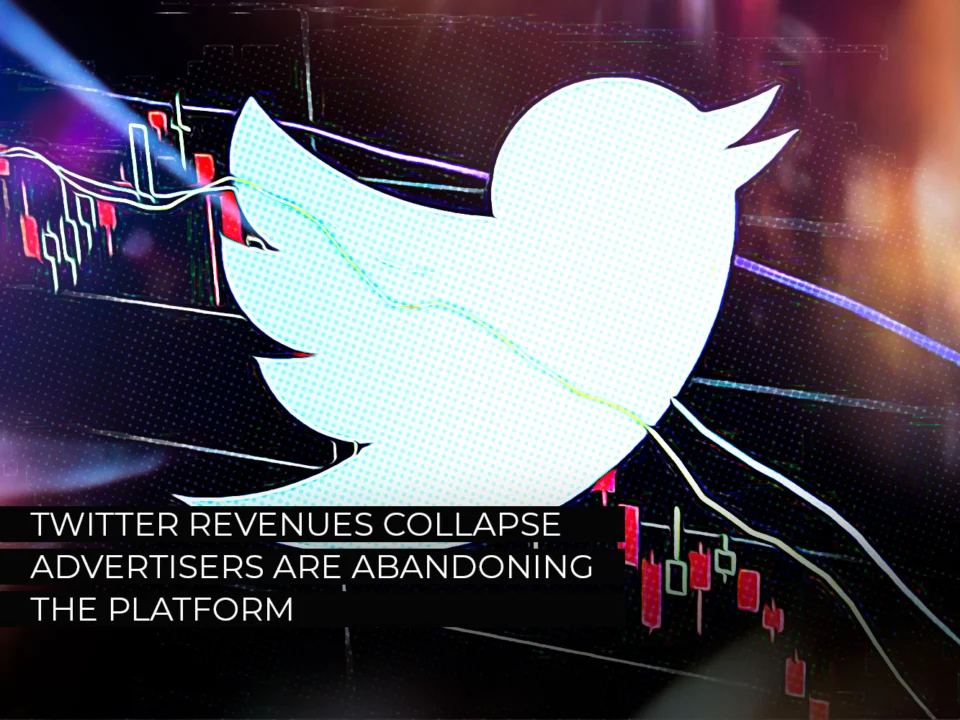The ever-evolving landscape of social media has recently witnessed a dramatic shift as Twitter’s revenues collapse, raising concerns across the digital advertising industry. With advertisers abandoning the platform, Twitter faces significant financial challenges. This decline can be attributed to multiple factors, including changes in consumer behavior and increased competition. The plummeting revenue not only impacts Twitter’s market position but also prompts critical discussions on potential strategies for recovery. In this blog post, we delve into the reasons behind this revenue decline and explore viable solutions to help Twitter regain stability.
Factors Contributing to the Revenue Decline

Several factors have contributed to the decline in Twitter’s revenues, particularly advertisers’ departure from the platform. Understanding these elements is crucial to grasp the broader financial predicament Twitter faces.
1. Ad Policies and Regulation Changes:
- Updates and changes in Twitter’s ad policies have left many advertisers uncertain.
- Increased scrutiny and stricter regulations often deter advertisers from continuing their investments.
2. Competition:
- Other social media platforms like Facebook, Instagram, and TikTok offer more robust and targeted advertising options.
- These platforms also boast larger and more engaged user bases, drawing marketers away from Twitter.
3. Content Moderation Issues:
- Twitter has faced backlash regarding its content moderation practices.
- Ineffective moderation can lead to brand safety concerns, causing advertisers to seek more secure environments.
4. User Engagement Decline:
- A noticeable decrease in user engagement impacts the effectiveness of advertisements.
- Brands are likely to advertise where active engagement and user interaction are higher.
5. Technical Challenges:
- Recent technical outages and bugs have made the platform unreliable.
- Consistent technical issues erode advertisers’ trust in Twitter’s ability to deliver stable promotional campaigns.
These factors collectively erode advertiser confidence. As advertisers look for more reliable and engaging alternatives, Twitter’s revenue decline becomes an inevitable consequence.
Impact on Twitter’s Market Position
The decline in revenues spells trouble for Twitter’s market position. Without the steady flow of advertiser funds, the platform faces multiple challenges.
Key Impacts Include:
Loss of Market Share: Competitors like Facebook, Instagram, and TikTok stand to gain as advertisers redirect their budgets. Twitter’s dwindling revenue may make it less attractive to new users.
Reduced Innovation: Limited funding can hamper Twitter’s ability to roll out new features or improve existing ones. This stagnation contrasts sharply with competitors continuously evolving to meet user demands.
Lowered Stock Value: As revenues collapse, investor confidence wanes, leading to a drop in Twitter’s stock prices. This, in turn, decreases the company’s market capitalization and financial stability.
| Impact | Consequence for Twitter |
|---|---|
| Loss of Market Share | Competitors gaining advantage |
| Reduced Innovation | Product development slows |
| Lowered Stock Value | Decreased financial stability |
The adverse effects of declining revenues are profound. Therefore, Twitter needs to swiftly address these issues to safeguard its position in the competitive social media landscape.
Potential Strategies for Recovery
To combat the decline in revenue, Twitter can implement several effective strategies:
1. Diversify Revenue Streams:
- Subscription Services: Introducing premium features for power users.
- E-commerce Integrations: Leveraging the platform for direct sales and brand partnerships.
- Content Monetization: Enabling creators to monetize their content through tips or paid tweets.
2. Enhance Ad Offerings:
- Advanced Targeting Options: Utilizing AI to deliver more personalized ads.
- Interactive Ad Formats: Offering more engaging options like polls and carousel ads.
- Transparency in Ad Metrics: Providing advertisers with clearer insights into ad performance.
3. Improve User Experience:
- Reduce Spam and Bots: Using advanced algorithms to maintain a high-quality user base.
- Enhanced Privacy Controls: Reassuring users about data security could increase engagement.
4. Strengthen Brand Relationships:
- Direct Collaborations: Partnering directly with brands to create custom campaigns.
- Ad Incentives: Offering discounts or additional reach for bulk ad purchases.
These strategies could not only help Twitter recover from its revenue slump but also strengthen its market position and build a more sustainable business model.
Frequently Asked Questions
Why are advertisers leaving Twitter?
Many advertisers are leaving Twitter due to concerns over the platform’s content moderation policies, changes in user engagement, and uncertainty regarding leadership decisions. These factors have led to an environment that some brands find unsuitable for their advertising efforts.
How has the collapse in revenue affected Twitter?
The substantial decline in revenue has had significant impacts on Twitter’s operations. Reduced income has led to budget cuts, layoffs, and diminished capacities to invest in new features or maintain the current infrastructure. This situation creates a cycle of further challenges in attracting and retaining both users and advertisers.
What are some alternative platforms advertisers are turning to?
Advertisers who are leaving Twitter are increasingly reallocating their budgets to platforms like Facebook, Instagram, TikTok, and LinkedIn. These platforms offer robust advertising tools, a large and engaged user base, and more reliable content moderation systems, which help maintain a safer environment for their brands.
Is Twitter taking any steps to win back advertisers?
Twitter has been making efforts to address advertisers’ concerns by improving transparency in their content moderation practices and introducing new tools for advertisers to better target and engage with their audience. However, whether these measures will be effective in reversing the revenue decline remains to be seen.







